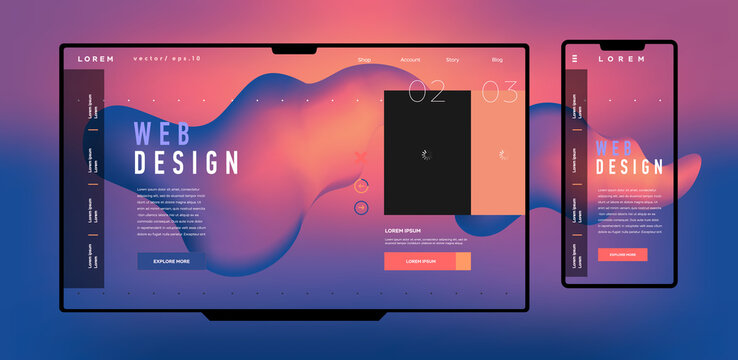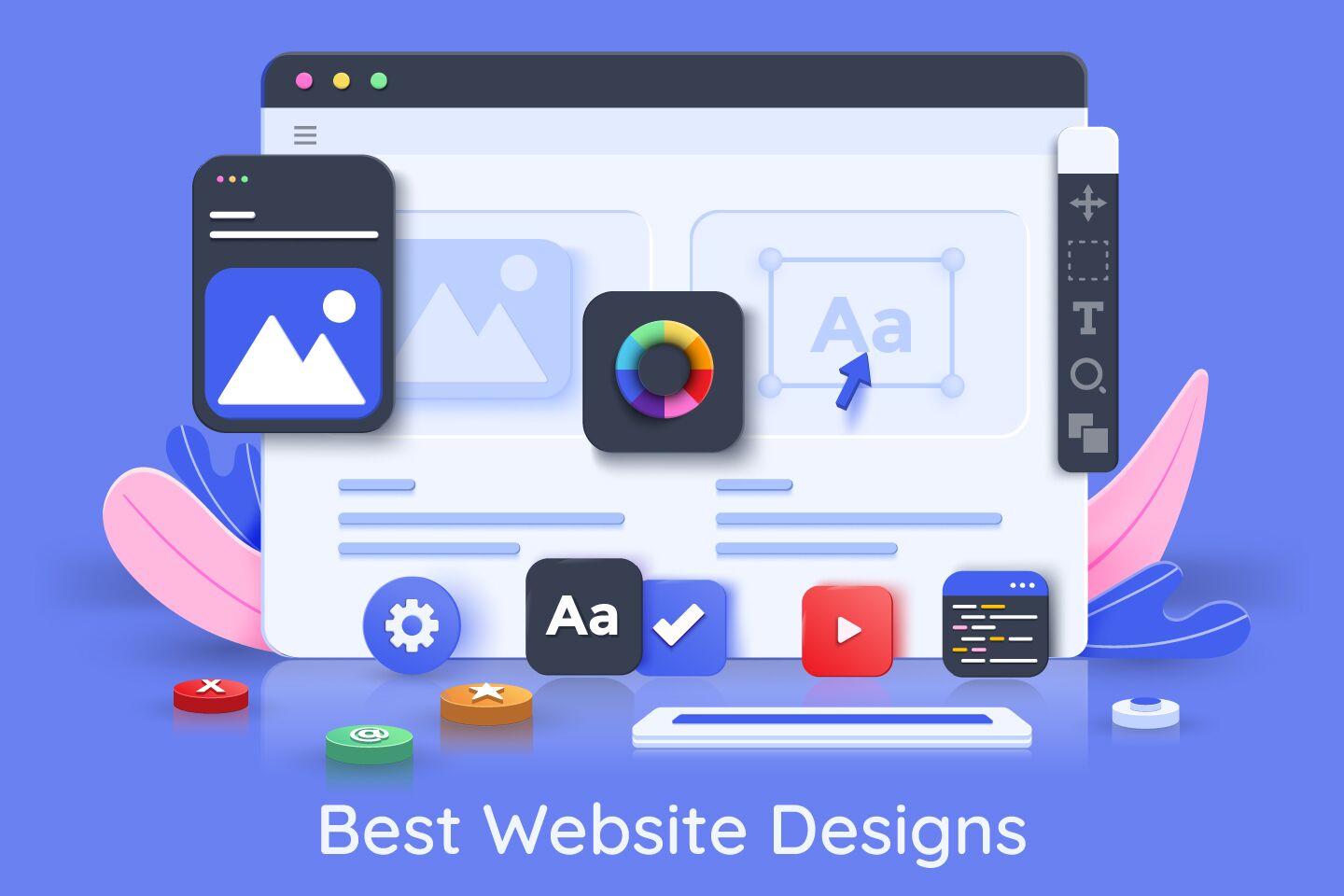Comprehending the Influence of Responsive Website Design on Mobile Traffic
As the number of mobile users continues to rise, the need for internet sites to effortlessly adapt to various screen dimensions comes to be increasingly evident. This adaptability not just boosts individual experience but additionally plays a critical function in keeping site visitors and minimizing bounce prices - Fort Worth Web Development.
Importance of Mobile Compatibility
With the expansion of smart devices and tablet computers, more individuals are accessing the web via mobile gadgets than ever in the past. Mobile compatibility directly influences a website's ease of access, capability, and general efficiency, influencing user interaction and contentment.
Incorporating receptive website design is a necessary method to accomplishing mobile compatibility. This layout methodology enables a web site to instantly adjust its design and material based on the screen size and orientation of the device being used (Fort Worth SEO). This adaptability guarantees that all individuals have a smooth experience, despite whether they are making use of a desktop computer, tablet, or mobile phone
Additionally, mobile compatibility is closely connected to browse engine optimization (SEARCH ENGINE OPTIMIZATION) Services have to prioritize mobile compatibility to stay competitive and ensure their digital existence is accessible to the broadest feasible audience, eventually driving development and engagement.
Enhancing User Experience
In the context of responsive web layout, enhancing user experience on mobile gadgets is essential. As the number of mobile individuals proceeds to climb, websites should adapt to various screen dimensions and orientations without jeopardizing performance or aesthetics.
Crucial element of a boosted mobile user experience consist of quick filling times, intuitive navigating, and accessible material. Quick packing times are vital, as individuals are much more likely to abandon a website if it takes too long to load. Intuitive navigation guarantees that individuals can discover information quickly, while accessible material enables readability and communication without unneeded zooming or scrolling. In addition, touch-friendly interfaces, which accommodate motions such as swiping and tapping, even more improve user interaction and contentment.
In addition, supplying a regular visual and useful experience throughout devices develops count on and reliability, urging return check outs. By focusing on these elements, receptive website design not only accommodates mobile audiences yet likewise fosters a favorable understanding of the brand, inevitably enhancing general customer experience.
Boosting Mobile Involvement
To efficiently enhance mobile engagement, internet designers should concentrate on producing compelling and interactive experiences that captivate customers' interest. This includes making use of responsive layout techniques that adapt perfectly to varying screen sizes and alignments, making sure that web content is visually attractive and easy to navigate on mobile phones. Focusing on quick filling times is vital, as users are most likely to abandon websites that are unresponsive or slow-moving. Executing attributes such as touch-friendly navigation, concise web content, and instinctive interface can substantially enhance customer interaction and fulfillment.

Additionally, leveraging personalization techniques, such as tailored material referrals based on user behavior and choices, can produce extra meaningful interactions and urge Go Here repeat sees. By concentrating on these elements, internet developers can significantly improve mobile engagement, making sure that customers remain involved and spent in the web content, ultimately driving higher retention rates and individual fulfillment.
SEO Perks of Responsive Layout
As internet developers improve mobile interaction with responsive methods, one more considerable benefit emerges in the world of search engine optimization (SEARCH ENGINE OPTIMIZATION) Receptive website design (RWD) plays a vital role in improving an internet site's presence and ranking on search engines. By guaranteeing a smooth user experience across tools, responsive style minimizes bounce prices, a critical metric that search engines consider when identifying website importance and quality.
Google, which commands a considerable share of the search market, supporters for receptive layout as the industry criterion. A solitary link framework, facilitated by RWD, simplifies creeping and indexing procedures for internet search engine crawlers. This his explanation efficiency boosts a site's accessibility and makes it easier for search engines to comprehend and place material suitably.
In addition, responsive design maximizes filling times, one more element heavily weighted in Google's algorithms. A quicker, much more effective web site enhances individual fulfillment, leading to longer web page gos to and higher engagement degrees, which favorably influence search engine optimization positions. Furthermore, RWD read this supports the application of enhanced metadata and tags, making certain that content is properly tailored for mobile and desktop customers alike.
Approaches for Reliable Execution
When implementing responsive web style, comprehending crucial approaches is essential for success. This approach likewise aids simplify web content, concentrating on essential elements that improve customer experience.
Second, utilize versatile grid formats and scalable images. A flexible grid makes sure that the web site's design changes perfectly across different display dimensions. In a similar way, using scalable photos that adapt based on resolution avoids distortion and keeps picture high quality, boosting the overall aesthetic.
Third, optimize loading times. Usage methods such as minifying and pressing pictures CSS and JavaScript submits to ensure quick page lots. Rate is important for preserving mobile customers who may desert slow-loading sites.

Last but not least, take advantage of analytics to monitor efficiency and individual actions. Analytics offer insights into just how users engage with the site, leading additional optimization efforts to fulfill progressing needs. By complying with these strategies, services can successfully execute responsive website design, optimizing their mobile website traffic possibility.
Final Thought
By adjusting layouts for various screen sizes, it substantially boosts customer experience, lowers bounce prices, and raises visit duration. This adaptability addresses the expanding number of mobile individuals, promotes involvement via instinctive navigating, and makes sure quick loading times, which are crucial for maintaining visitors and boosting general electronic existence.
In the context of receptive internet style, boosting user experience on mobile gadgets is necessary.Secret elements of a boosted mobile individual experience consist of fast packing times, instinctive navigation, and easily accessible web content.To efficiently improve mobile engagement, internet designers must concentrate on creating engaging and interactive experiences that captivate customers' interest. Implementing attributes such as touch-friendly navigation, concise content, and user-friendly customer interfaces can significantly enhance individual communication and contentment.
Additionally, RWD supports the implementation of enhanced metadata and tags, guaranteeing that web content is appropriately tailored for mobile and desktop individuals alike.